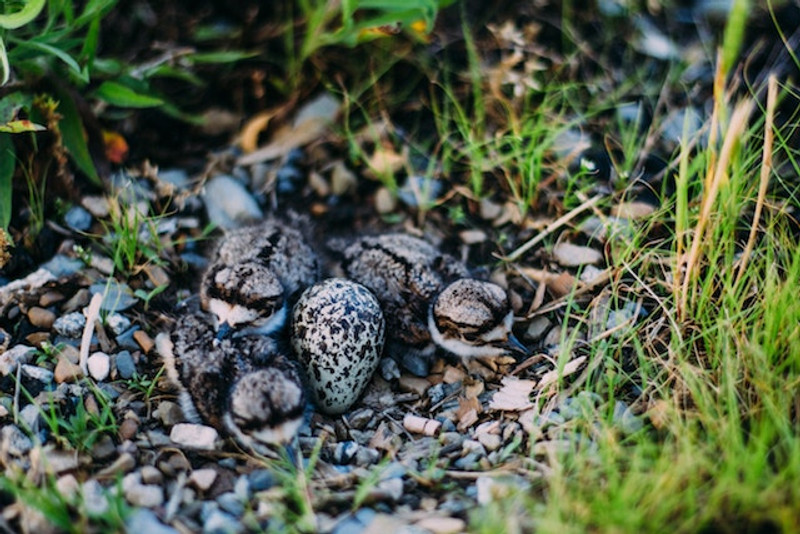
How to Mow Better For Habitat!
Published by Anne Altor on Oct 25th 2017
You care about wildlife, and you want to mow some of your property.
The dilemma: you know mowing eliminates habitat and kills nesting, feeding and resting critters. And, you know it's important to leave plants standing through the winter for wildlife. So how do you maintain both open space and habitat? You don't have to get rid of your mower. In fact, keeping some areas in an early successional stage (which mowing does) creates great habitat for pollinators, grassland birds and mammals. There are ways to mow that minimize damage and help keep the ecosystem healthy. Here are some guidelines for habitat-friendlier mowing:Except for lawns and paths, mow at most once per year.
This enables pollinators, birds and small mammals to successfully reproduce. If your main goal is to keep trees out, you can limit mowing to every 3 or so years (strong mowers can handle small woody stems). And consider mowing the lawn less often. If you let clover and violets bloom in your yard, bees can feed on the flowers between mowings. You might even find that the grass stops growing so fast!Mow when plants are dormant.
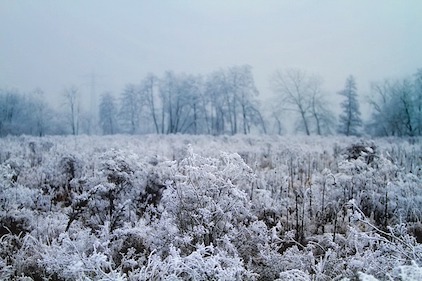 Dormant plants are an important part of the landscape. They provide winter homes for insects and small mammals, and food for birds. However, mowing when plants are in bloom causes even greater mortality because many life stages are present, including eggs, young and adults. Mowing in late winter (March) leaves important habitat in place through the coldest months and reduces overall mortality. By late March, birds and mammals will have eaten many of the seeds and will have survived in the shelter you've left them. And if you practice rotational mowing as described next, you'll be preserving spring nesting areas and overwintering insects in the unmowed sections.
Dormant plants are an important part of the landscape. They provide winter homes for insects and small mammals, and food for birds. However, mowing when plants are in bloom causes even greater mortality because many life stages are present, including eggs, young and adults. Mowing in late winter (March) leaves important habitat in place through the coldest months and reduces overall mortality. By late March, birds and mammals will have eaten many of the seeds and will have survived in the shelter you've left them. And if you practice rotational mowing as described next, you'll be preserving spring nesting areas and overwintering insects in the unmowed sections.
Use rotational mowing.
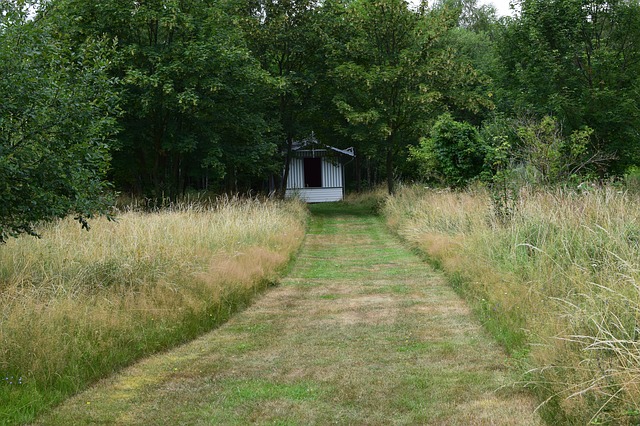 Rotational mowing means keeping some areas unmowed every year between mowed patches. These areas are cut every other year at most (i.e., once every 2+ years). Unmowed areas should be as large and wide as possible (preferably at least half of your green space). This preserves habitat, creates structural diversity in the landscape, and gives mobile animals/insects a place to take shelter. Depending on your landscape, you can mow in strips, blocks, patches or random patterns. With rotational mowing, areas that are mowed in one year are left unmowed the next year, and vice-versa.
Rotational mowing means keeping some areas unmowed every year between mowed patches. These areas are cut every other year at most (i.e., once every 2+ years). Unmowed areas should be as large and wide as possible (preferably at least half of your green space). This preserves habitat, creates structural diversity in the landscape, and gives mobile animals/insects a place to take shelter. Depending on your landscape, you can mow in strips, blocks, patches or random patterns. With rotational mowing, areas that are mowed in one year are left unmowed the next year, and vice-versa.
Raise mower blades.
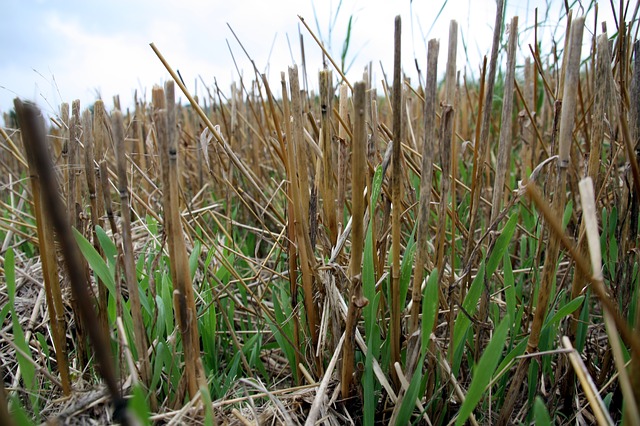 For lawns, raising the blades to 3 or more inches can save small pollinators and spiders that are close to the ground. For non-lawn areas, keeping the blades 6 to 16 inches high helps prevent ground nests from being destroyed, and leaves stubble that creatures can overwinter, nest and hide in. This cover also helps insulate the soil and makes it resistant to drought.
For lawns, raising the blades to 3 or more inches can save small pollinators and spiders that are close to the ground. For non-lawn areas, keeping the blades 6 to 16 inches high helps prevent ground nests from being destroyed, and leaves stubble that creatures can overwinter, nest and hide in. This cover also helps insulate the soil and makes it resistant to drought.
Use flushing bars for mowing tall vegetation.
Deer, small mammals and birds nest and hide in tall grasses and meadows. Flushing bars are bars with chains hanging down that ride ahead of the blades. They scare wildlife out of the way.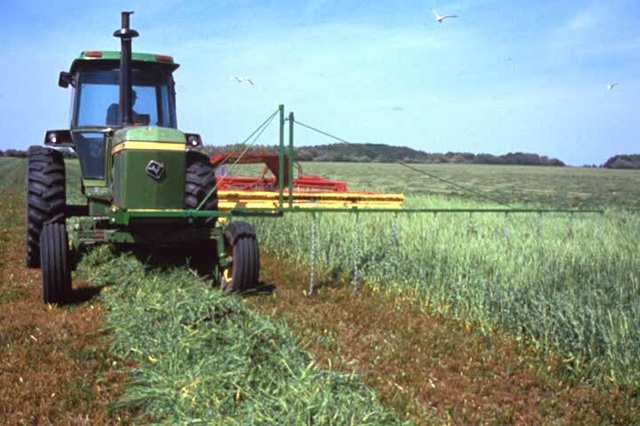
Tractor with flushing bars
Mow from the inside out.
Mowing inward in a circular pattern pushes wildlife into a shrinking safety zone. When mowing the lawn (or harvesting hay), start from the center and work outward. This lets birds, insects and wildlife escape to edges and unmowed areas.
Don't mow to the edge.
If you have a hedgerow or treeline, leaving a strip unmowed next to it will create an extra-rich habitat. Edge areas where different vegetation types meet have greater plant diversity and support a rich array of species. It's especially important to leave a wide buffer zone around wetlands and ponds. Many animals need both ecosystems to survive.
Mow slow.
High-speed mowing gives wildlife no chance to escape. So slow that mow!!Good sources for more in-depth info:
Reducing Mortality of Grassland Wildlife During Haying and Wheat-Harvesting Operations
KY Dept. of Fish and Wildlife Resources guide to mowing to preserve wildlife and habitat
Pollinators in Natural Areas: A Primer on Habitat Management
Agricultural practices That Conserve Grassland Birds
Uncut grass refuges mitigate the impact of mechanical meadow harvesting on orthopterans
